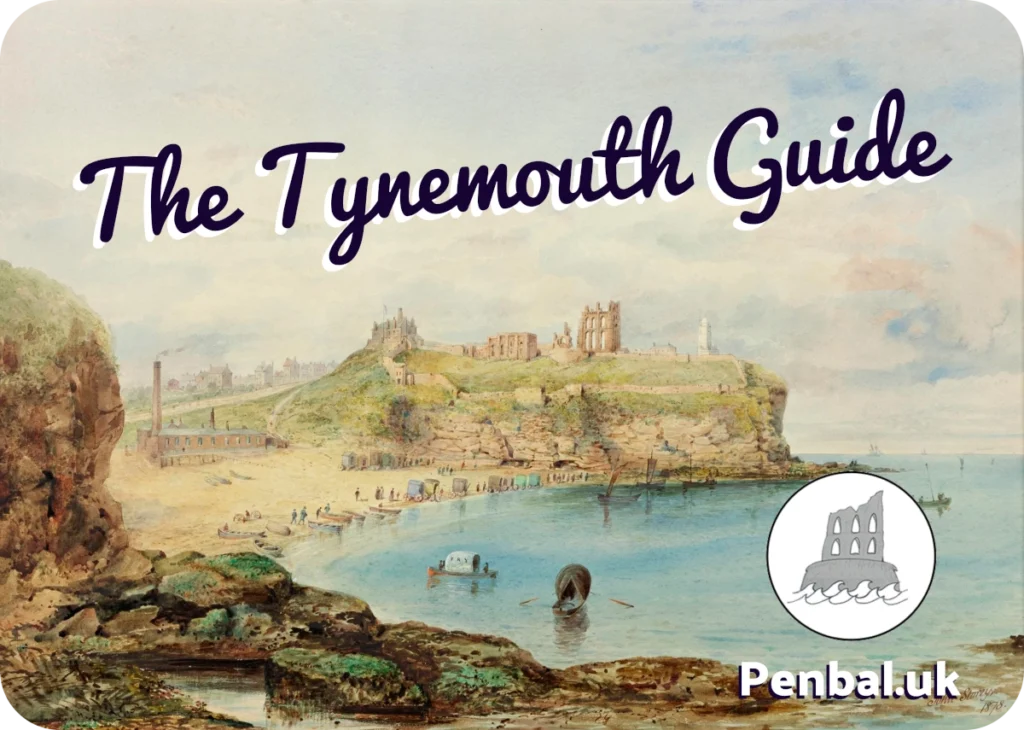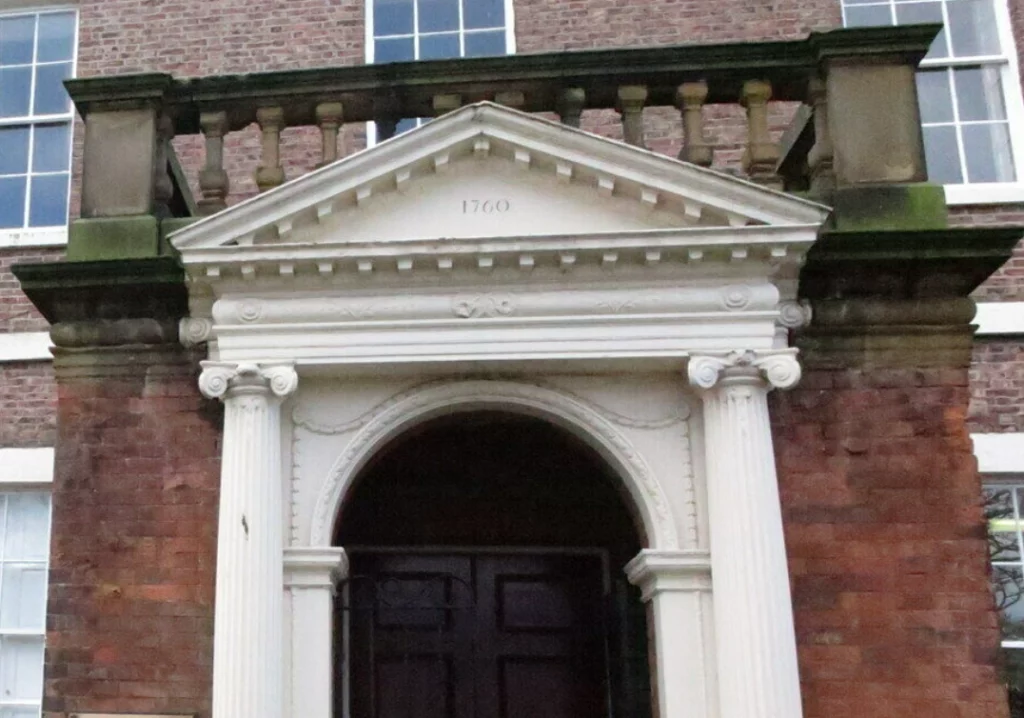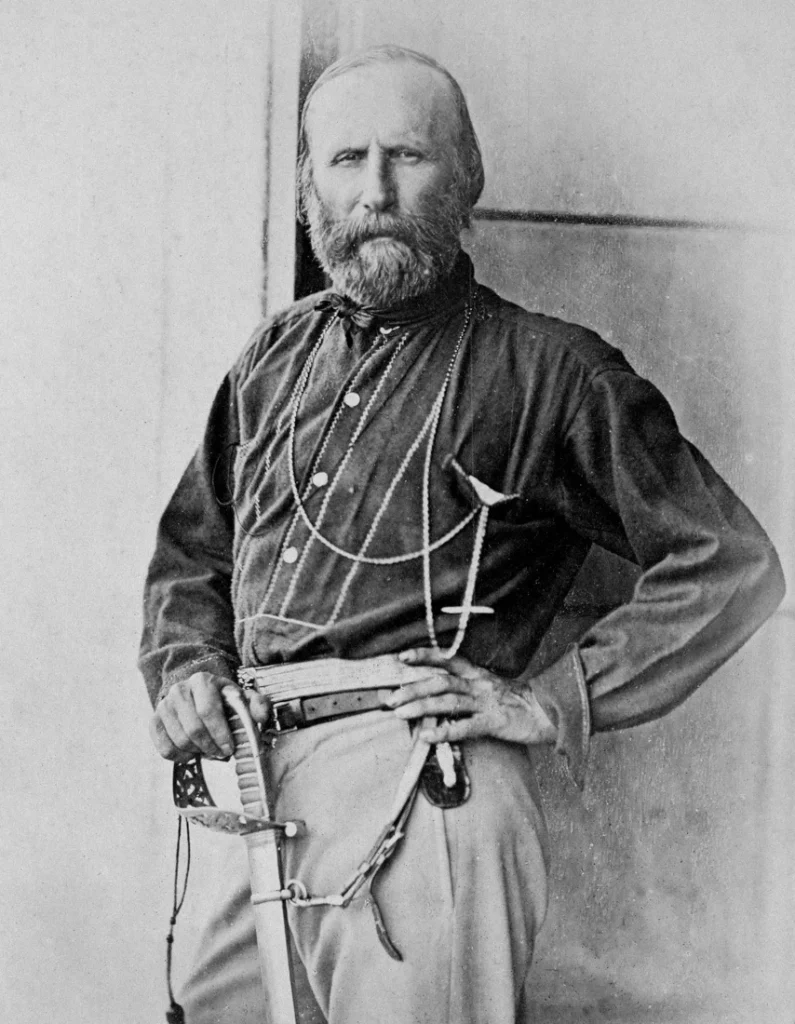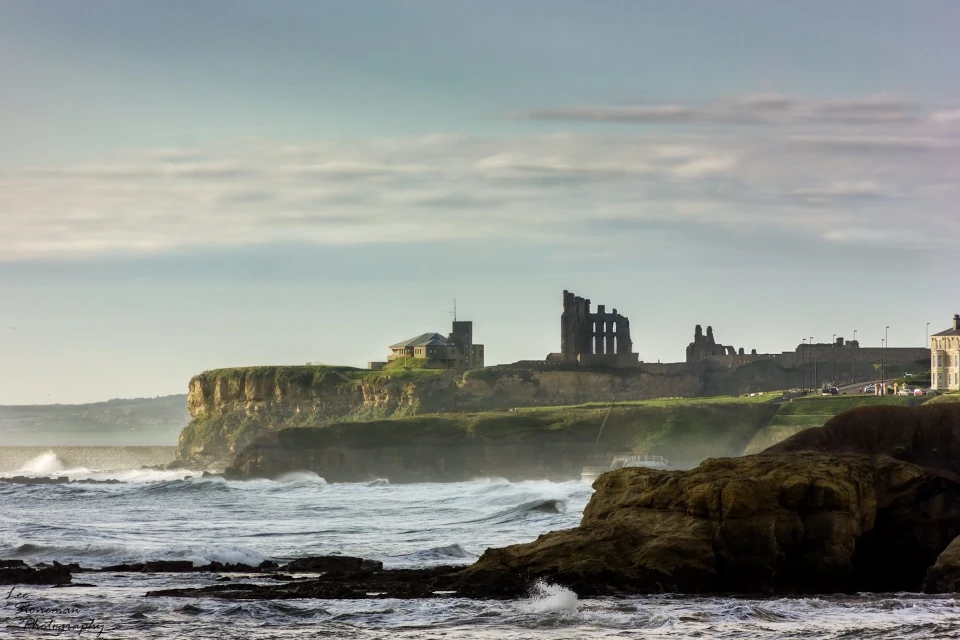Tynemouth Guide
Queen Victoria Park (The Green)
3. King’s School Doorway
This is perhaps the most interesting doorway in Tynemouth, with 1760 written on the pediment and beautiful ionic columns and a balustrade around the portico.
Originally the porch belonged to a Dutch trader who lived around the corner on Percy Park Road and built an octagonal lookout house so he could observe ships entering the harbour. This doorway was felt too large and grand for that street so it was moved here, brick by brick, to a more prominent position in the centre of the village. It features Flemish bond brickwork and it’s a really fabulous piece and one of the finest doorways on this wonderful stretch of housing surrounding the Green.
4. Garibaldi
Next to the King’s School entrance we have the plaque honouring Garibaldi’s stay in Tynemouth.
Giuseppe Garibaldi is known as the father of Italian nationhood. Italy became a nation state in 1862 and it was Garibaldi who galvanised the country, bringing the regions and the people together.
He came to Tynemouth in 1854 in order to gather support from industrialists around the North East who were like making a lot of money and advancing technology on the railways and in shipbuilding. He needed them to invest in his vision for Italy.
He was also connected with the Chartists, an important labour movement of the 19th century and precursors to the Labour Party. The Chartists were responsible for instituting a lot of reforms in British politics and society.
There are a few stories about Garibaldi’s visit. One story is that of the ‘Geordie Netty’. During their stay, Garibaldi’s entourage were continually asking the cleaning lady, Dov’è gabinetti? — “Where’s the toilet?” Eventually she cottoned on to the meaning and would shout at the men, “The netty’s doon there!”.

5. Boer War Memorial
The Boer War was fought in South Africa and the Transvaal from 1899-1902. Monuments commemorating this conflict are not all that common and the Tynemouth memorial is quite badly aged and weathed. Fortunately, money has recently been secured to have it fully restored, as the wording and names have faded, while its finial has long been lost.
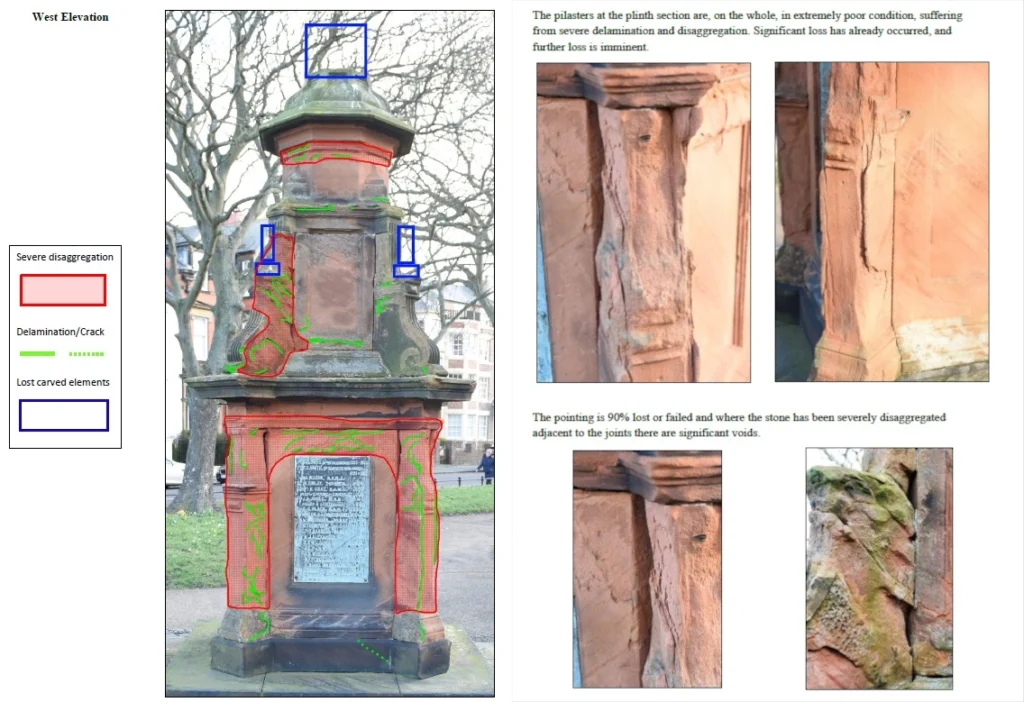
6. Queen Victoria Statue
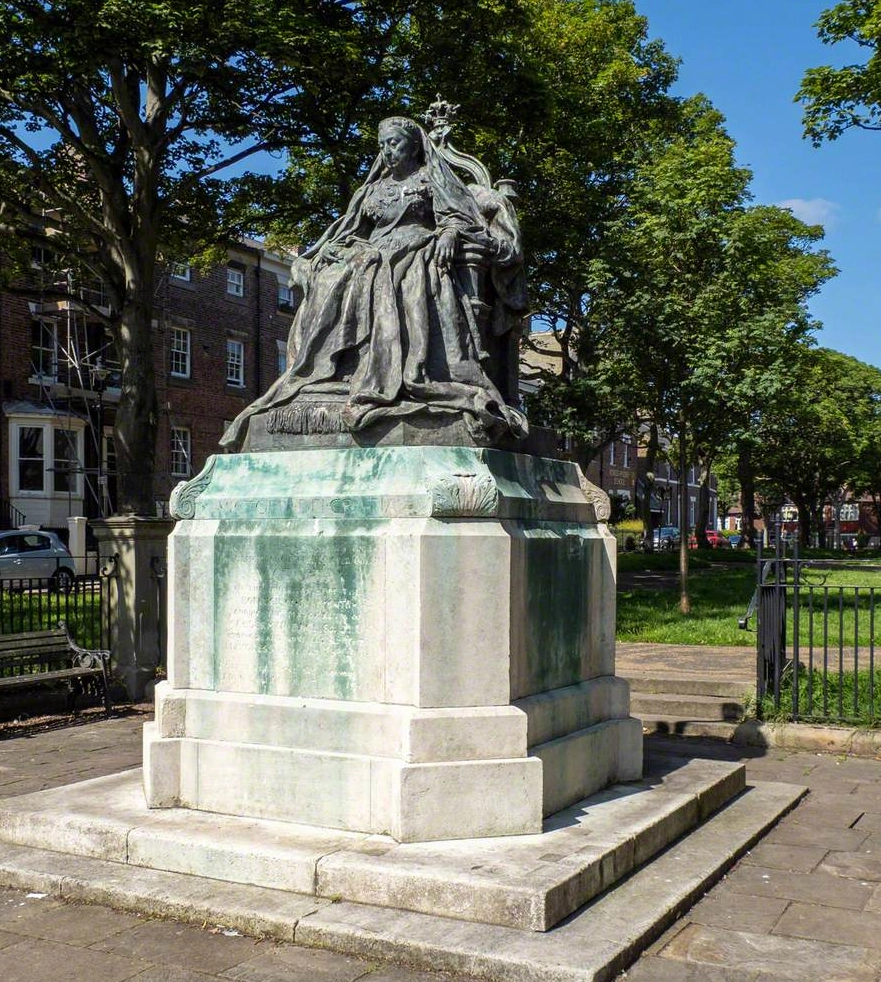
Almost every sizeable town in the Commonwealth has or had a Queen Victoria statue and we too have our own life-size bronze statue in Tynemouth. She has recently been cleaned and given a new coating. She actually had a number of parts stolen many years ago, including her crown, sceptre and two figurine representing justice and peace on either side of her throne.
The statue was built by public subscription to the tune of £1,000 and was the second cast from the mould of the statue that was destined for Delhi, and which still sits in a corner of Delhi Art College today. The sturdy portland stone plinth is inscribed with the words:
VICTORIA.DEI.GRATIA
BRITANNIARUMREGINA
INDIAEIMPERATRIX
7. Charles I
Queen Victoria faces the entrance to the village, Front Street. It’s often said that because Tynemouth is so old. There are meant to be a lot of tunnels and underground workings around here.
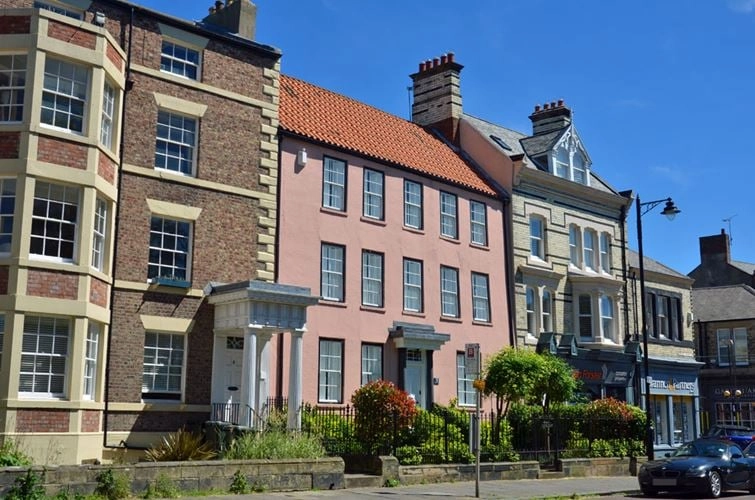
In fact, it is rumoured that in 1646 after King Charles I escaped to Newcastle, he was meant to have hidden in the basement of 9 Front Street, although the present house we see was built in the early 18th century. The King’s hideout was part of a putative network of tunnels that supplied the castle during the Civil War siege and later formed smugglers’ passages into the alehouses of Tynemouth. At least, that is what the Village folklore attests.

